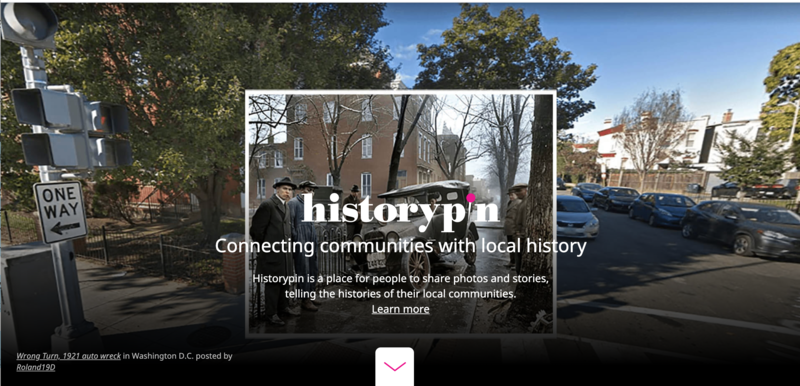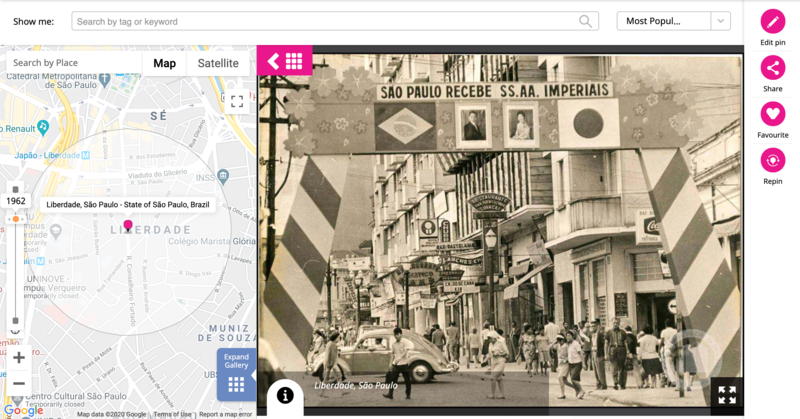Rodrigo Abrantes da Silva’s Updates
The memory of cultural heritage and curation of sources, for local history projects, with Historypin
I don't know if the most suitable concept for the application that I will present in this update is digital media or new media. But here I go:
Local History investigates historical dynamics in space over time, allowing the student to demonstrate the "importance of building relationships of transformation, permanence, similarity, and the difference between the present and the past" (PCN - História, p. 46). Local History is a specific approach that integrates, with the concept of locality, the themes and problems of Economic, Social, Demographic, Cultural, and Political History (Martins, 2009).
To define locality, it is necessary to know how its inhabitants see themselves, establish relationships with each other, and with others, which feelings they have for the space they have historically occupied and constituted. In other words, it is the networks of social relationships and some form of awareness of belonging that indicates the dynamic existence of the locality.
Teachers who wish to work with local history need to roll up their sleeves and go out into the field, as most textbooks do not cover the topic satisfactorily. We will have to visit existing archives and museums and carry out fieldwork with our students, touring our cities with attentive eyes and ears, looking for elements indicative of secular permanency and survivals, directly observable, that configure long-lasting realities, capable of establishing a dialogue between past and present.
Such survivals can be economic activities, social relationships, and cultural practices marked by enormous longevity, which still retain an expressive part of their "old logic": buildings, equipment, utensils, food, toys, medicines, ways of doing, celebrating and thinking. We will have to make an iconographic record of these survivals, gather information about them, and collect oral testimonies about them.
In this process, technology could become a great ally in the process of building files to be worked on in the classroom. Several digital resources are at our disposal to create databases of images, videos, and texts, to classify and organize our sources.
Good technology for this is the Historypin app. Historypin is a digital time machine that creates a new way to view and share images. It allows the creation of archives from which people can gather around the history of their community.
The Historypin app is an initiative of the organization We Are What We Do, a non-profit company, intending to promote changes in the pattern of behavior of individuals, with the main focus on social and environmental issues.
The app allows us to include our sources exactly where we collected it. As it is integrated with Google, we have the geolocation technology of Google Maps to position our images and we can use Street View to browse, in real-time, the locations where they are inserted.
We can curate images from museum archives, insert and treat them on the platform, and we can also digitize personal images.
More than promoting the understanding of historical dynamics, perceiving permanences and changes, this type of work makes teachers and students protagonists in a process of research, production and curation of sources for Local History, which will make them reflect on the legacy of the past, what they wish to conserve, transform or forget.
Click here to visit some of my pins.
References:
Filho, Almícas Vianna Martins. Como escrever a história da sua cidade. Belo Horizonte: Instituto Cultural Almícar Martins, 2005.
Hofling, Maria Arlete Zulkze. As páginas de História. Disponível em: <http://www.scielo.br/pdf/ccedes/v23n60/17274.pdf>. Acesso em 04 de agosto de 2014.
Martins, Marcos Lobato. História Regional. In: Pinsky, Carla Bassanezi (Org.). Novos temas nas aulas de história. São Paulo: Contexto, 2009.



